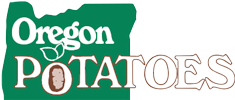Potato virus Y
General Information:
Potato virus Y (PVY) is the most important of a group of viruses that cause “mosaic” symptoms in potato foliage. There are many biologically distinct strains of PVY, causing various symptom severity across the potato cultivars grown in the Northwest. Symptoms range from a very mild mosaic to systemic shock reaction and plant death. Most, if not all, strains cause some yield loss. Some strains of PVY can cause tuber damage as well, in the form of various internal and external symptoms such as rings, spots, and cracking.
Dispersal:
Aphids transmit PVY in the mode known as “non-persistent,” which means that the virus does not circulate in the aphid, there is effectively no latent period between acquisition and ability to infect, and aphids retain infectivity for only a short time after acquisition. PVY is taken up through the aphid mouthparts (stylets), and adheres to them and other foregut parts with the help of a specialized viral protein known as “helper component.” PVY can also be spread mechanically between plants via foliar contact.
Management:
Management of PVY in commercial production relies very heavily on availability of clean seed. The non-persistent transmission biology offers little opportunity to control PVY spread via insecticide application because aphids are able to transmit before insecticides can act. Also, many species of aphids can transmit PVY, some of which are not resident in potato fields. Production of potatoes aiming for low PVY infection is best done in isolation from aphids in space, time or both.
PVY biology and management has been a topic of much concern and research in recent years, with many ongoing research projects. One primary research goal is development of resistant cultivars.















